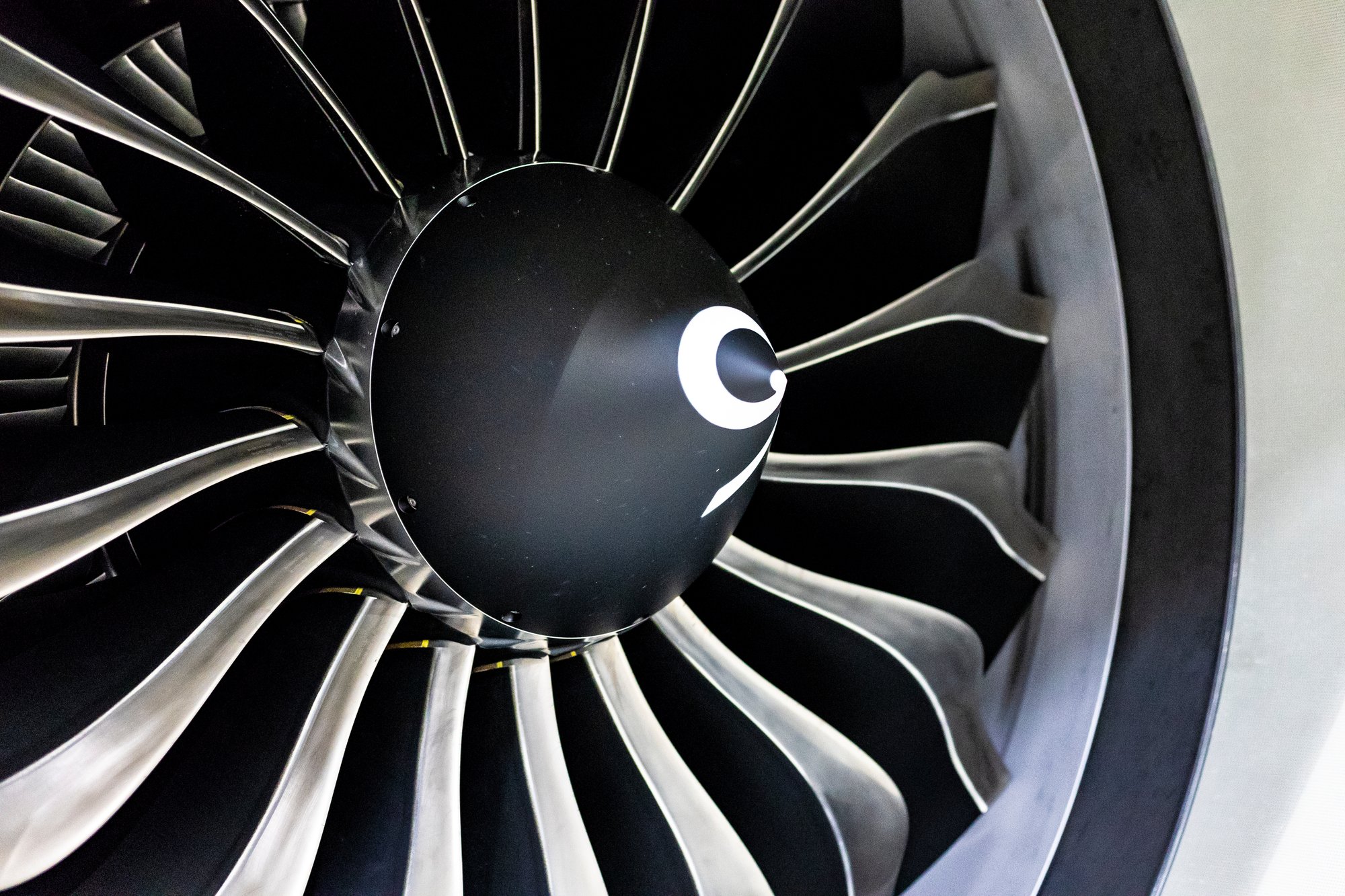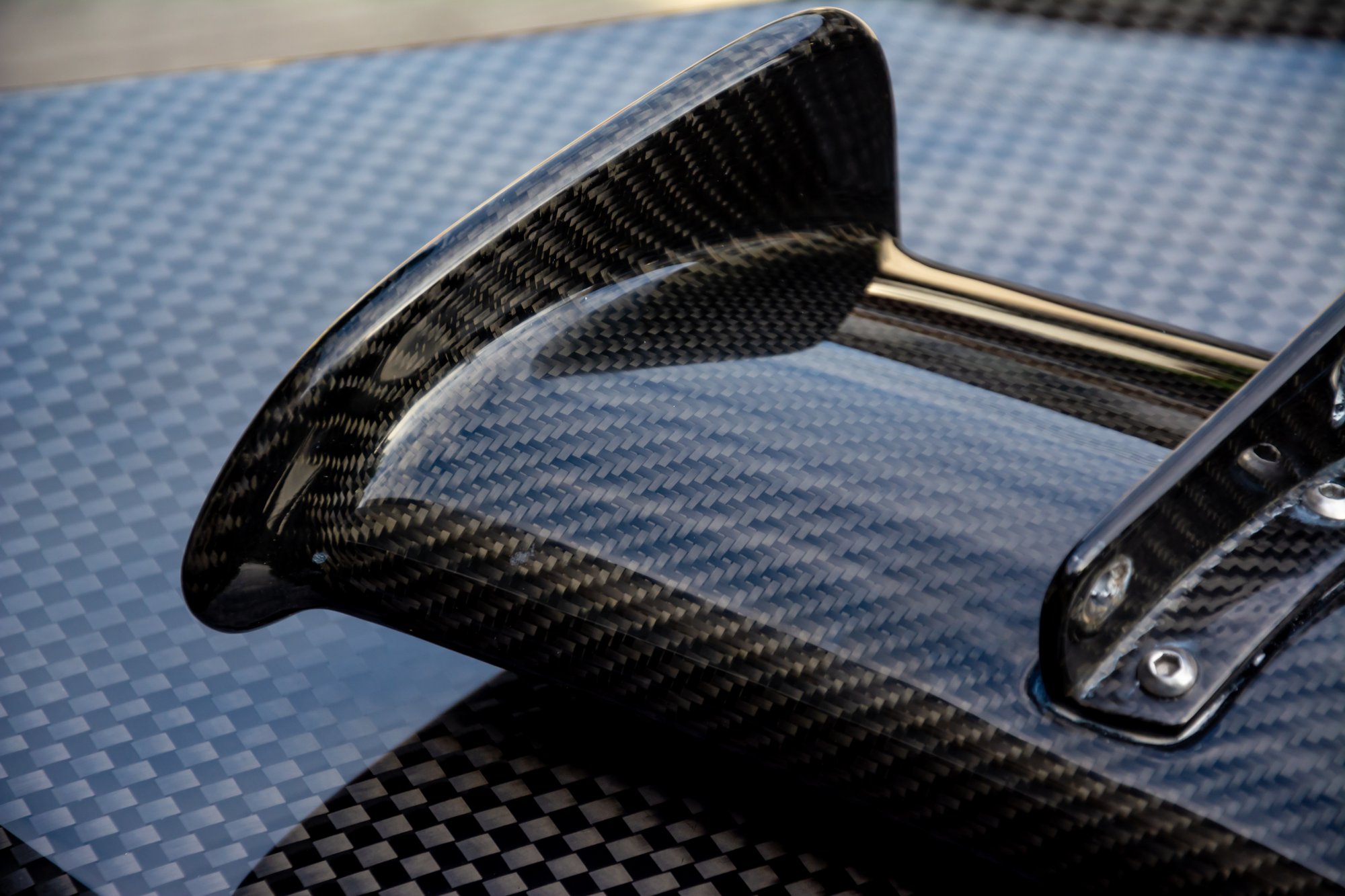Composite surface preparation

The most controlled and cleanest surface preparation for composite bonding and coating
Wet blasting, or vapor blasting as it is also known, is one of the preferred processes for composite preparation in various industries. Due to the control the wet blasting process offers, it is ideal for bonding and coating preparations.
Wet blast processing control allows for a high level of accuracy and cleanliness. It will not damage the fibres like other methods, and leaves a very reactive surface enabling the best surface to bond from or coat.
Wet blasting applications for Composite surface preparation
Wet blasting is being used in industries such as aerospace and motorsport for which safety, control and repeatability are of paramount importance. Applications such as metal to carbon composite bonding, and coating for aerospace fan blades and structural components are just a few of the applications where wet blasting is being used.
Here are some composite applications:
Surface Cleaning: Removal of contaminants, release agents, or residual materials from the surface of composite components. Ensures a clean substrate for subsequent processes such as bonding, painting, or coating.
Preparation for Bonding: Creating a properly prepared surface for adhesive bonding. Enhances the adhesion of adhesives to composite surfaces, improving the strength and reliability of bonded joints.
Paint and Coating Preparation: Creating a textured surface for better adhesion of paints and coatings. Improves the durability and longevity of coatings applied to composite components without damaging fibres.
Surface Abrasion: Creating a controlled surface roughness to enhance mechanical bonding in applications such as adhesive bonding or coating. Improves the mechanical interlocking of materials for stronger and more reliable connections.
Deburring and Edge Radiusing: Removing sharp edges, burrs, or irregularities from the edges of composite components. Enhances safety during handling and assembly and ensures a smoother and more finished appearance.
Resin Removal: Removing excess resin or matrix material from composite parts. Achieves precise control over resin content and improves the overall quality of the composite.

Surface Texturing: Adding a specific texture or finish to the surface of composite components for aesthetic or functional reasons. Customizes the appearance or functionality of composite parts for specific applications.
Mold Cleaning: Cleaning molds used in the manufacturing of composite components. Ensures the longevity of molds by removing residues and contaminants, maintaining the quality of produced components.
Defect Removal: Removing defects, inconsistencies, or imperfections from the surface of composite parts. Enhances the overall quality and appearance of the final composite product.
Environmental Considerations: Reducing airborne dust and contaminants during surface preparation. Creates a safer and cleaner working environment, especially in applications where airborne particles could pose health or environmental risks.
When applying wet blasting to composite materials, it's essential to consider the specific characteristics of the composite, including the type of matrix material, reinforcement fibers, and the desired outcome for the final product. Adjusting parameters such as abrasive media type, water pressure, and dwell time allows for customization to meet the unique requirements of composite applications.
Wet blast process benefits for Composite surface preparation
Our wet blasting process offers several inherent benefits that add to it being the prefeed surface processing method for many industries and applications. Some of the key process benefits are listed below.
Highly controllable Surface Treatment: Wet blasting is a highly controllable process compared to other methods, such as dry blasting. It can effectively remove contaminants, coatings, burrs and rust without causing damage to delicate automotive components, ensuring the integrity of the surfaces.
No Dust Emission: The addition of water in wet blasting suppresses dust formation, resulting in a cleaner and safer working environment. This is crucial in the automotive industry where cleanliness is essential for maintaining high-quality standards and ensuring the health and safety of workers. This also means no static build up or hazardous environments that can occur with some materials.
Environmentally Friendly: The use of water in wet blasting minimizes the environmental impact compared to dry blasting methods. It reduces airborne dust and facilitates easier containment and disposal of waste, contributing to environmental sustainability.
Versatility in Abrasive Media: Wet blasting can utilize a variety of abrasive media, such as glass beads, aluminium oxide, Ceramics, or others, and due to the high level of control the process can also work wider a wider range of media sizes from large coarse media to very fine if the requirement calls for it. This versatility allows manufacturers to choose the most suitable media for specific applications, providing flexibility in surface preparation.
Improved Surface Finish: Wet blasting not only cleans surfaces but also leaves them with a smoother finish. This is particularly beneficial for applications where a high-quality appearance is crucial, such as in the production of automotive parts with aesthetic requirements.
Minimized Heat Generation: Wet blasting generates less heat compared to some methods. This is advantageous for components that are sensitive to heat, preventing potential damage or distortion during the process.
Reduced Media Consumption: Wet blasting uses abrasive media more efficiently compared to other methods. The water cushions the impact and creates the ability to control and filter to a very fine level, allowing the media to be reused for a longer duration before replacement, and adds consistency and repeatability to process. This results in cost savings over other methods, and a more accurate level of control over your process.
Enhanced Worker Safety: The reduction of dust and the generally lower abrasive impact contribute to a safer working environment for operators. Wet blasting helps mitigate health risks associated with exposure to airborne contaminants, improving overall workplace safety.
In summary, wet blasting provides a combination of precision, environmental responsibility, cost-effectiveness, and safety benefits, making it a superior method and attractive option for various industry applications
Process Driven Solutions for composite processing
Our aim is to work with you and supply you the process and solution(s) to meet your requirements.
Our equipment is designed to best utilise our process to meet your requirements. By utilising our years of experience and process knowledge, and combining it with our automated technology, we can provide a complete solution that delivers control and consistency to give you the perfect finish every time.
Contact us to discuss your requirements, and how we can work with you. Or have a look at our solution pages for more information.
We also design and manufacture washing equipment which in many cases complements our wet blasting solutions.
In many applications we have implemented solutions that incorporate both blasting and washing in a one step process which can remove handling steps and increase efficiency.
